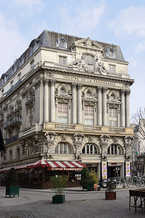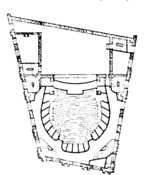EN
history of the theatresupplementtechnical dataHistoric equipmentThéâtre de la Renaissance
Charles de Lalande
alias Theatre Lyrique20 Boulevard Saint-Martin, | |
| show on the map | http://www.theatredelarenaissance.com/ |
Important events
People
Charles de Lalande |main architect
History
Additional information
No information has yet been entered
Add information














